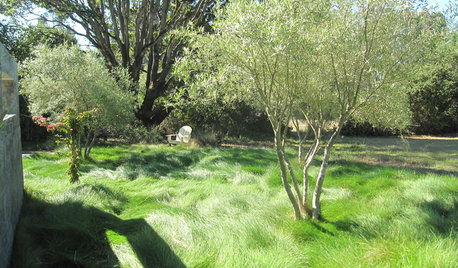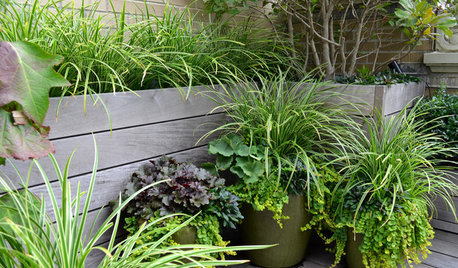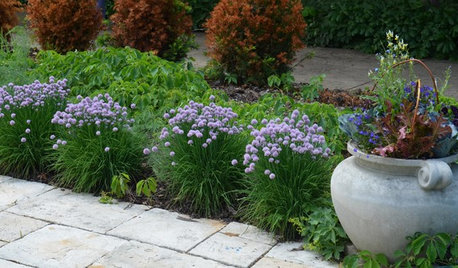How hard is it to dig out large established ornamental grasses?
linnea56 (zone 5b Chicago)
15 years ago
Related Stories

GRASSES10 Ways to Use Ornamental Grasses in the Landscape
These low-maintenance plants can add beauty, texture and privacy to any size garden
Full Story
GARDENING AND LANDSCAPING7 Ornamental Grasses for Coastal Gardens
These hardy seashore plants evoke the ocean, sway in the breeze and help prevent sand erosion in the landscape
Full Story
GARDENING GUIDESGarden Myths to Debunk as You Dig This Fall and Rest Over Winter
Termites hate wood mulch, don’t amend soil for trees, avoid gravel in planters — and more nuggets of garden wisdom
Full Story
PLANTING IDEASCreate High-Impact Container Gardens With Grasses
When it comes to adding drama, texture and panache to a pot, these strappy species are hard to beat
Full Story
GARDENING GUIDES8 Spectacular Grasses to Energize a Fall Garden
Dancing in the autumn wind or flowing along a flower bed, these ornamental grasses bring wonderful movement and color to the landscape
Full Story
LANDSCAPE DESIGNCalifornia Says Goodbye to the Sprawling Ornamental Lawn
New state rules will effectively limit turfgrass to 25 percent of the landscape in most new and renovated yards
Full Story
GARDENING GUIDESEdible Plants That Double as Ornamentals
Try growing these tasty plants with your ornamentals for an attractive garden and fresher meals
Full Story
ECLECTIC HOMESHouzz Tour: A New Look for Former Student Digs
An ill-treated Victorian in England becomes a more open, extended and aesthetically appealing family home
Full Story
LANDSCAPE DESIGNHow to Choose a Fence That Feels Right and Works Hard
Making a thoughtful fencing choice now can create happiness for years to come
Full Story
LIFEHard Winter? 9 Ways to Battle Cabin Fever
We know a lot of you are trapped where it just won’t stop snowing. Here are some ways to survive
Full Story






donn_
linnea56 (zone 5b Chicago)Original Author
Related Professionals
Reading Landscape Architects & Landscape Designers · Brentwood Landscape Architects & Landscape Designers · Cary Landscape Architects & Landscape Designers · Chattanooga Landscape Contractors · Fort Hunt Landscape Contractors · Pine Hills Landscape Contractors · Woodbury Landscape Contractors · Downey Solar Energy Systems · Lynwood Solar Energy Systems · Dunkirk General Contractors · Florida City General Contractors · Leominster General Contractors · Milford Mill General Contractors · Olney General Contractors · Brookhaven Outdoor Lighting & Audio Visual Systemsgrass_guy
linnea56 (zone 5b Chicago)Original Author
patsyrose
donn_